Review of archaeological discoveries helps deepen understanding of history, report Fang Aiqing and Mao Weihua in Urumqi.
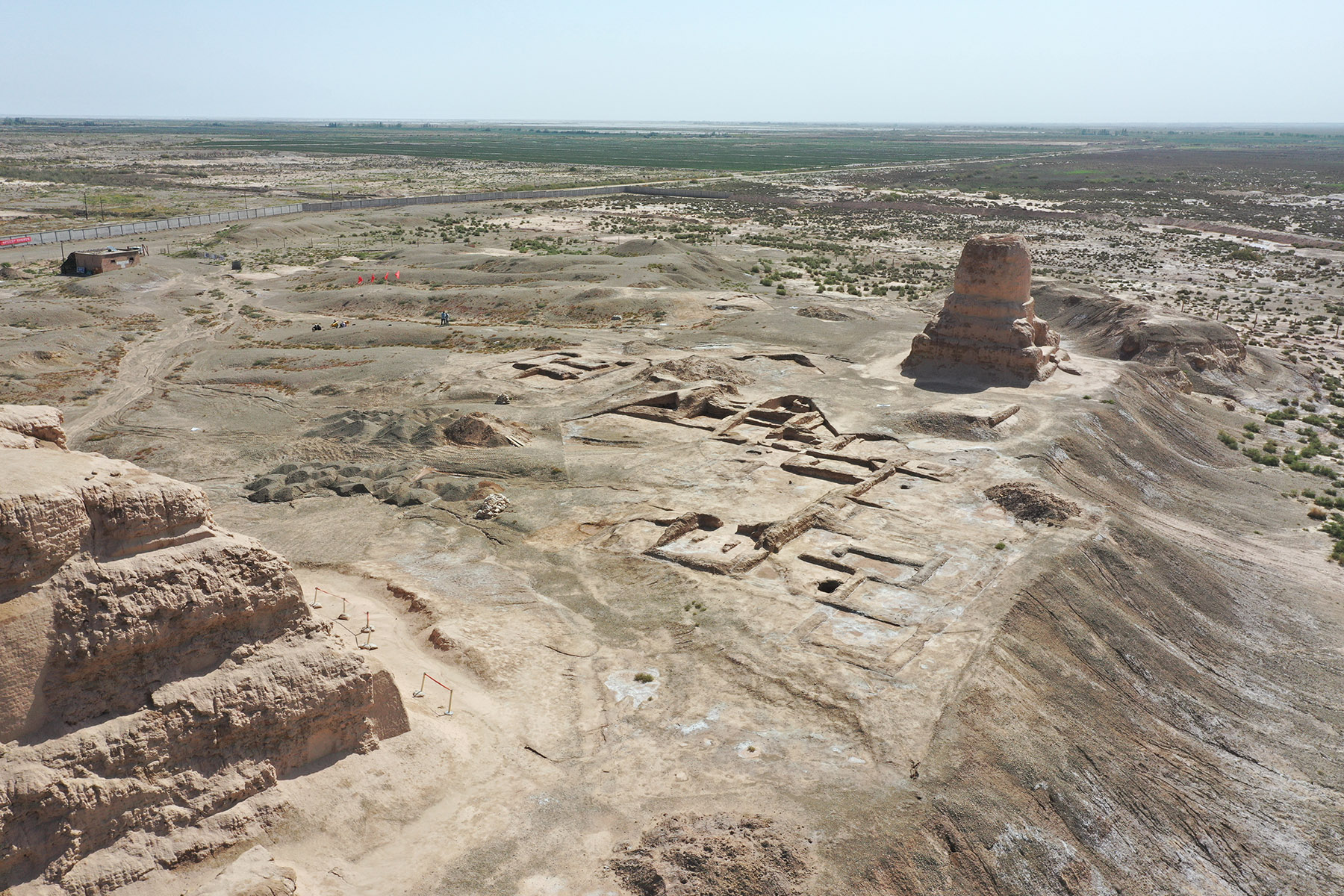
Archaeological surveys and excavations in the Xinjiang Uygur autonomous region over the past year have yielded a new understanding of the region's rich history as well as of the legacy of the ancient Silk Road.
Last year, the region's institute of cultural relics and archaeology undertook 135 projects involving archaeological surveys, explorations and excavations ahead of large construction programs, as well as 15 proactive excavation projects, Li Wenying, the institute's director, said at a news briefing in Urumqi in January.
The 15 proactive projects, organized in collaboration with institutions such as the Chinese Academy of Social Sciences' Institute of Archaeology, included five in eastern Xinjiang, three in the north, and seven in the south, spanning from the Bronze Age to the Yuan Dynasty (1271-1368).
READ MORE: Digging up the Buddhist past
The efforts sought to uncover more about the early civilization of Xinjiang, the region's historical role in national unification, and the various religions that once flourished, their development, and local adaptation.
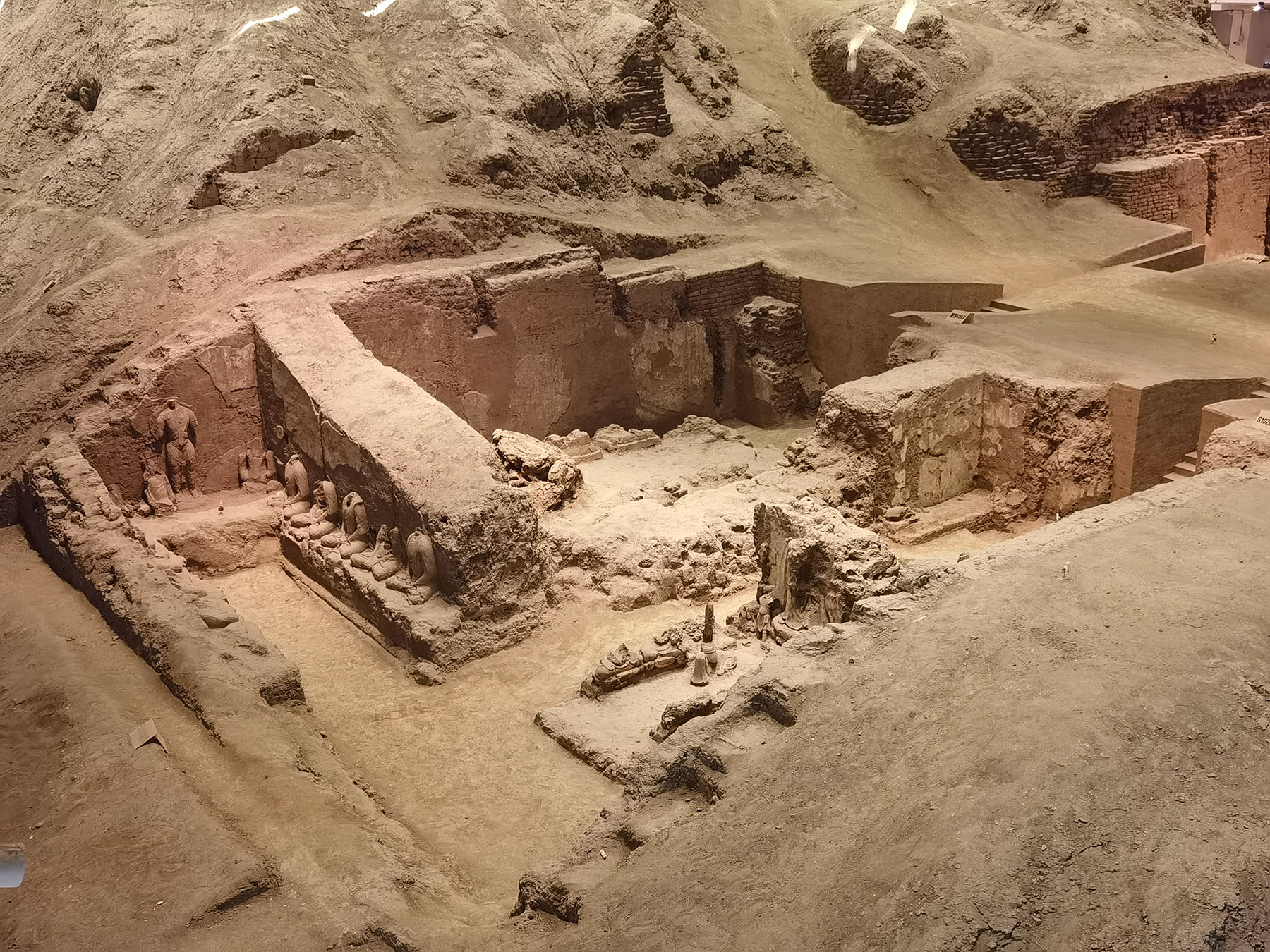
At the Husta archaeological site in Wenquan county in the Bortala Mongolian autonomous prefecture, archaeologists excavated a tin-bronze alloy knife that is considered one of the oldest bronze items found in China, and one of the earliest tin-bronze artifacts found on the Eurasian Steppe, according to State broadcaster China Central Television. Located on the homonymous grassland at the southern foot of the Alatau Mountains, the Husta site is a large-scale Bronze Age settlement that covers tens of square kilometers. The Alatau Mountains are part of the western Tianshan Mountains, which run east-west across Xinjiang into Central Asia.
The core area of the site covers around 12 sq km and consists of city ruins, cemeteries, surrounding military watchtowers and other remains, the majority of which date back around 3,600 years.
During a recent excavation, archaeologists found a large cemetery about 2 km southeast of the core area. It dates back 4,600 to 4,800 years, predating the core area.
It has a rectangular stone-enclosed burial mound whose stone enclosure measures 23 meters in length from north to south and 25 meters from east to west, with a height of around 1.2 meters and an orientation of nine degrees south of the west.

It is one of the earliest Bronze Age sites found so far in Xinjiang.
Previously, this style of mid-Bronze Age (2600-1800 BC) tomb was primarily found in the Altay Mountains in the far north of Xinjiang and about a 1,000 km drive from Wenquan county.
Meanwhile, similar tombs from the late Bronze Age (1800-1000 BC) have been found in both the Altay and the western Tianshan mountain regions.
The discovery of the tomb in Husta has now extended the spatial and temporal distribution of rectangular stone-enclosed burial mounds to the western Tianshan Mountains region in the early Bronze Age, and marks a breakthrough in archaeology surrounding the age in Xinjiang, according to the CCTV report.
Moreover, the burial customs, artifacts and ancient genetic information collected indicate that, while bearing distinct features of the region to the east of the Altay Mountains, the Husta tomb also demonstrates influences from the Eurasian Steppe to the west.
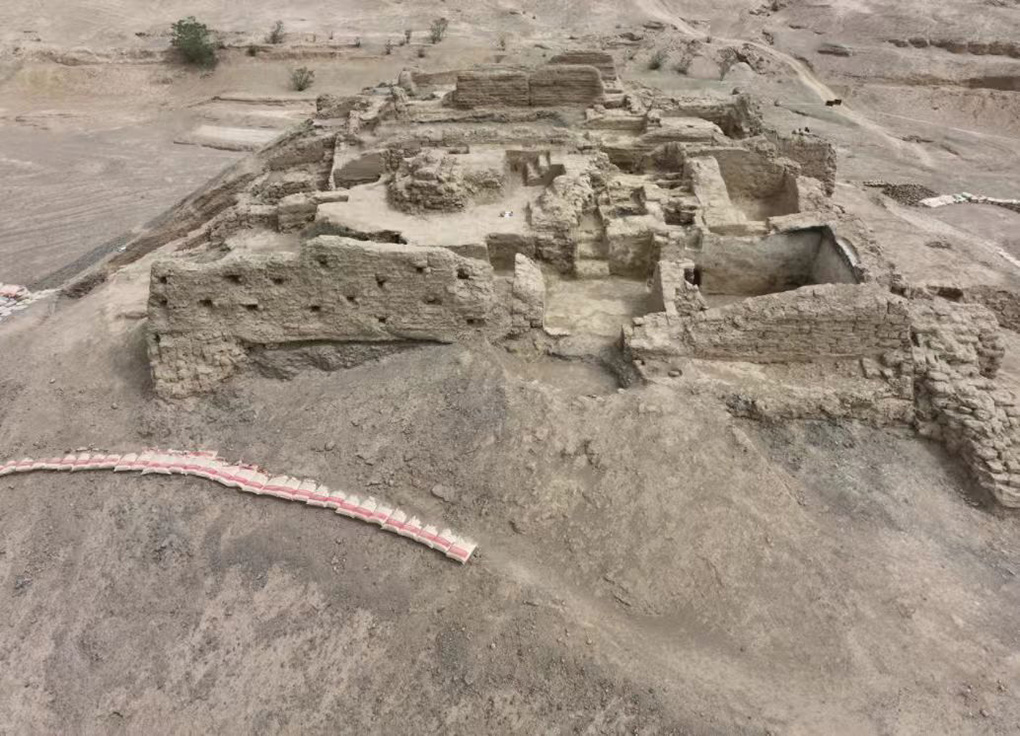
Wang Peng, associate researcher at the Institute of Archaeology, CASS, said during the January event that the excavation has provided clues to tracing the cultural origins of the rectangular stone-enclosed burial mounds in the core area of the Husta site, which belong to the late Bronze Age.
Wang added that it also contributed to exploring the formation of an Altay Mountains-western Tianshan Mountains cultural zone in the early Bronze Age, and the early development and spread of metallurgy across Eurasia.
Apart from the above-mentioned tinbronze alloy knife, artifacts also include pottery, wooden objects, stone scepters, stone and horn arrowheads, and a large number of earrings, beads, pendants and other ornaments made from different materials.
Husta is one of many Bronze Age sites in the Bortala River Basin. This expansive river valley sits in the central part of the Eurasian Steppe, connecting Central Asia with inland China. It historically served as an important corridor for cultural exchanges between the eastern and western sides of the mountains, according to an essay published in 2021 by Wang and Jia Xiaobing, a researcher at the Institute of Archaeology, CASS.
Since 2016, the institute has been excavating Husta with Xinjiang's institute of cultural relics and archaeology.
The remains of horse bones have previously been found in the core area. In particular, two horse skulls were found on military constructions.
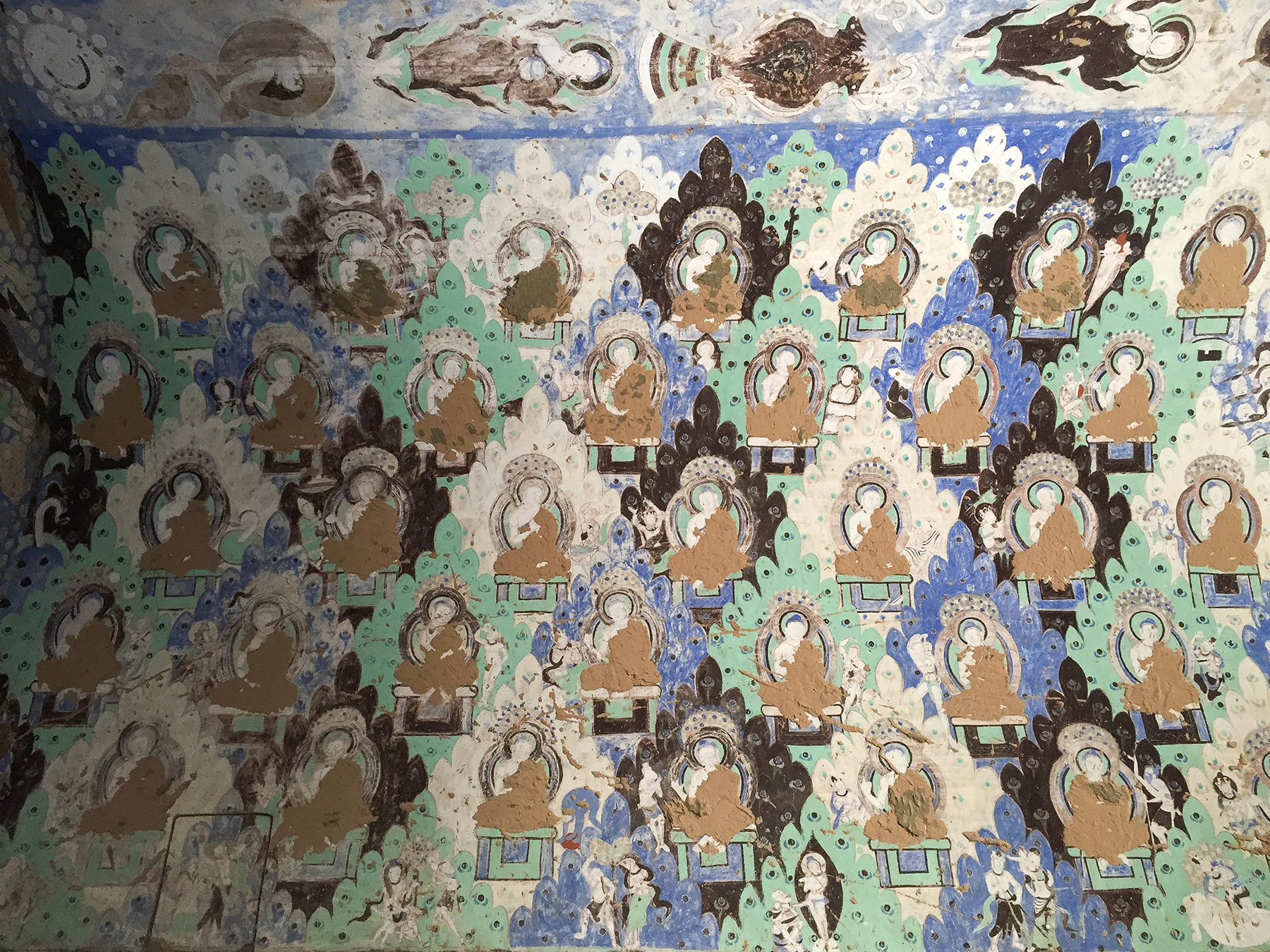
Molecular biological analysis has confirmed that they are some of the earliest examples of domesticated horses found in China.
Meanwhile, the remains of millet and wheat crops, as well as pottery belonging to the Andronovo Culture — a group of related Bronze Age cultures that flourished in Siberia and Central Asia roughly between 2000 BC and 900 BC — demonstrate that by no later than the 17th century BC, cultural exchange and interaction via the Eurasian Steppe was well-established, according to the two researchers.
Millet is widely believed to have been first cultivated in northern China, whereas wheat is thought to have originated in the Fertile Crescent in the Middle East. In the past, the Altay Mountains were a crucial passageway for cultural transmission across Eurasia and a key node of cultural exchanges.
Remains of millet, barley and wheat have also been uncovered at the Tongtiandong archaeological site in Jeminay county, Altay prefecture. Human settlements at this group of granite caves began some 45,000 years ago and lasted until the early Iron Age.
The January event revealed that among the carbonized grains discovered, the oldest millet and barley dates back around 4,500 years, while wheat appears to date to around 3,500 years ago, which differs from previous results.
Experts are calling for more attention to the study of the route through which millet was introduced from northern China to the Altay Mountains region.
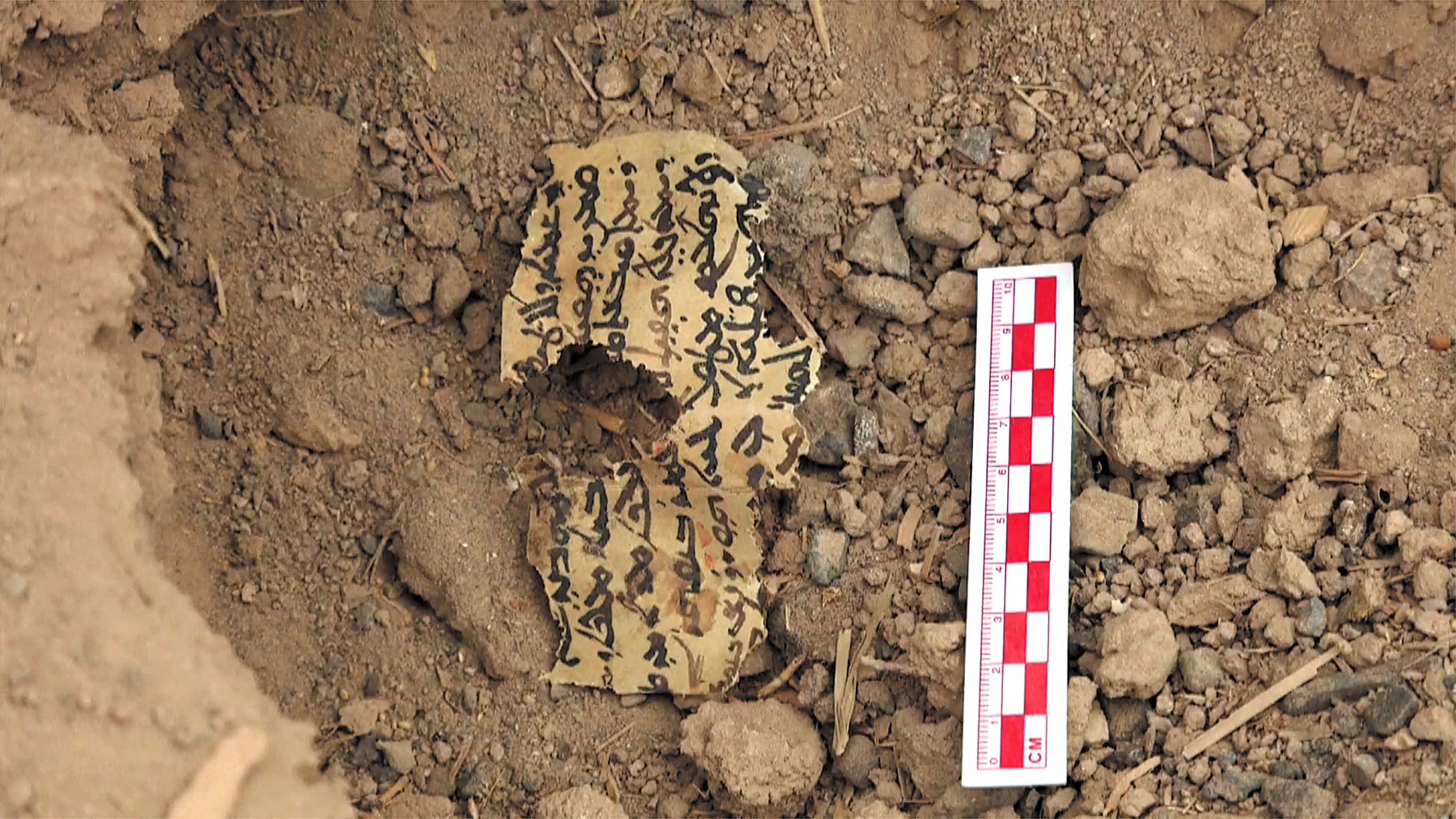
In Xinjiang, urban archaeology has been a focus over the past year, along with the study of religious relics, given that historically, it was a region where different religions interacted and coexisted.
The Wushituer ruins in Kuqa city, Aksu, are of an ancient city that served a military function and was engaged in border trade. Its major remains date from the Wei (220-265) and Jin (265-420) dynasties to the Tang Dynasty (618-907).
In 2024, archaeologists cleared the remains of nine houses in its southern area and unearthed fragments of Buddhist statues and painted murals, as well as carved wooden Buddha hands, suggesting the site's possible, early association with Buddhism, says Niu Jianzhe, associate research librarian at the National Museum of China, which excavated the site with the Xinjiang institute.
Bashbaliq City, or the Beiting ruins in Jimsar county, Changji Hui autonomous prefecture, used to be a political, military and cultural center on the Silk Road along the northern foot of the Tianshan Mountains from the Tang to Yuan dynasties. It's the largest and best-preserved ancient city in this area.
Cui Jiabao, assistant researcher at the Institute of Archaeology, CASS, says she believes the large government office building that she and colleagues excavated in the northeast of the outer ring last year will advance studies into the ancient city's evolution.
Guo Wu, a researcher at the CASS institute who is leading the excavations of Beiting ruins, said during an academic seminar on China's frontier archaeology in late December that besides its primary military and political functions, Beiting also served significant religious and cultural roles.
"Several major religions once thrived here. While Buddhism was the dominant faith, multiple religions coexisted harmoniously," he adds.
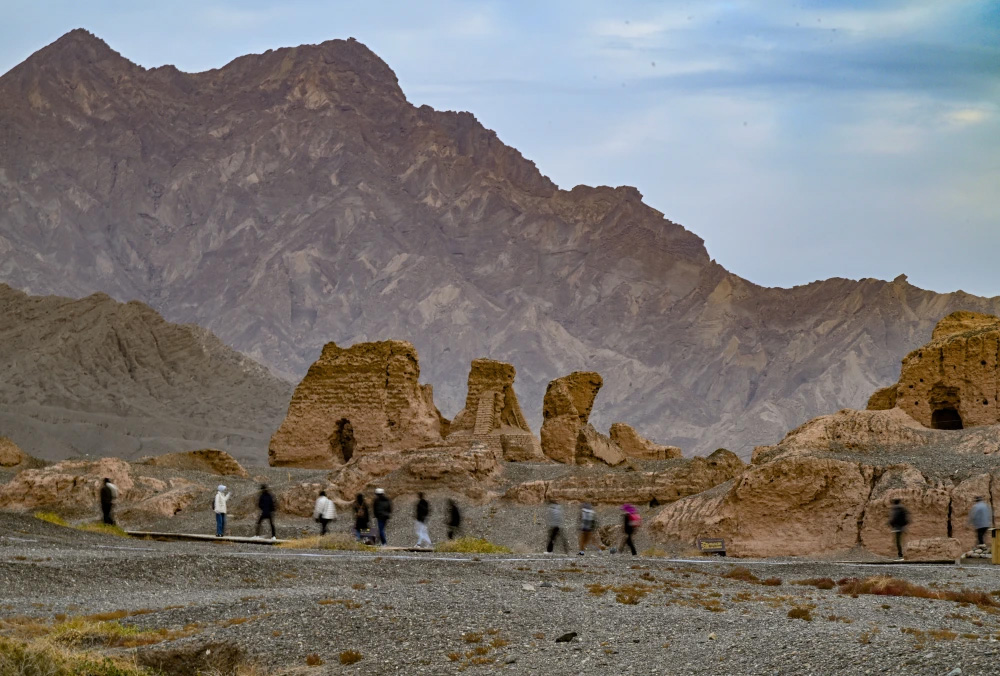
The Mo'er Temple site in ancient Shule, located in the desert outskirts of Kashgar, is believed to have been first built in the 3rd century, and fell into ruin around the 10th century, contemporaneous with the period of the Three Kingdoms (220-280) to the late Tang Dynasty in the Central Plains.
Archaeological efforts since 2019 have revealed the Buddhist temple's layout and development over a period of 700 years, providing a typical case of the early adaptation of Buddhism in China, and the influence of the Central Plains architectural style, according to Xiao Xiaoyong, archaeology professor at the Minzu University of China.
The discovery of a vineyard, tombs and a northern slope residential area, artifacts such as metal crosses, and murals, as well as a variety of ancient manuscripts at the 1,300-year-old Nestorian monastery ruins at the Xipang site in Turpan, has provided more material for studying monastery life during the Tang to Yuan dynasties in the Xiyu, or Western Regions, a historical geographic term that referred to an area that includes present-day Xinjiang and part of Central Asia.
ALSO READ: Breakthrough findings span from Paleolithic period to Qing Dynasty
Nestorianism, which is referred to as jingjiao in ancient documents, was a branch of Christianity that originated in present-day Syria and was once popular in ancient China.
Guo said during the December seminar that the examples of religious adaptation at the Mo'er Temple and in Xipang reflect the inclusive policies adopted in the governance of border regions during the Tang to Yuan dynasties, demonstrating cultural exchanges between the East and West, as well as interactions and integration among different ethnic groups.
According to a meeting attended by cultural heritage authorities in Xinjiang on Feb 8, this year, the region will invest more efforts in studying the ruins of Loulan Ancient City in Ruoqiang county, Bayingolin Mongolian autonomous prefecture, as well as the remains of ancient Kucha, which are widely spread across Aksu prefecture and Luntai county in Bayingolin. Among the latter, the well-known Kizil Cave-Temple Complex in Baicheng county, Aksu, is considered a major site of Kucha culture.
Contact the writers at fangaiqing@chinadaily.com.cn


